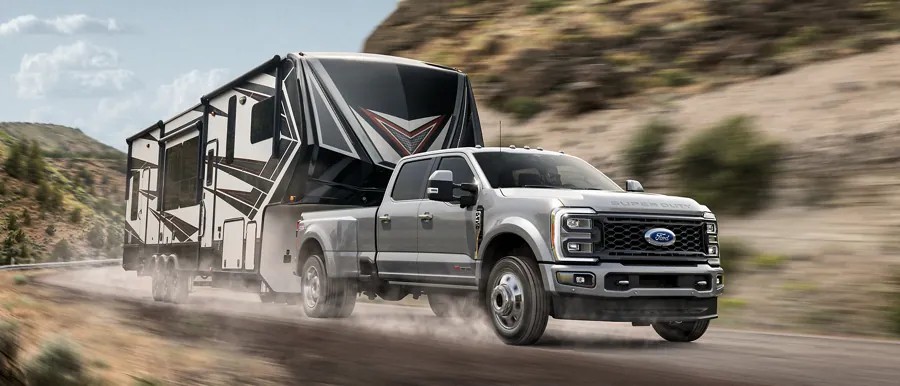Ford is revving up its engine for the heavy-duty truck market. To meet the growing demand for Super Duty models, the automaker is stepping on the gas with a two-pronged approach to increased production and electric powertrains.
First, Ford is expanding its manufacturing muscle by adding the Oakville Assembly Complex in Canada, which will inject an additional 100,000 trucks into their annual output. This production surge coincides with the introduction of “multi-energy technology” for the next generation of Super Duty beasts.
While specifics are still under wraps, this shift signals Ford’s commitment to propelling the Super Duty lineup toward a more electrified future. The exact roadmap for electrification remains to be seen, but potential avenues include hybrid powertrains similar to the well-received F-150 PowerBoost.
This could involve a compact electric motor nestled within the existing heavy-duty transmission, seamlessly integrating electric power for enhanced performance and fuel efficiency. Alternatively, Ford might even explore the possibility of fully electric Super Duties, though the feasibility of such a solution with current battery technology is still under evaluation.

One thing’s for certain: the future of Super Duty trucks is likely to be charged with electricity. While a long-range, all-electric Super Duty might require further battery advancements, a hybrid option seems more like a sure bet shortly. This strategic infusion of electric power could be a game-changer.
It has the potential to not only improve fuel economy but also raise performance without sacrificing the legendary towing and hauling capabilities that are the backbone of the Super Duty brand. By embracing electrification, Ford is ensuring that Super Duty trucks retain their dominance in the heavy-duty segment while adapting and thriving in the ever-evolving automotive world.
The Ford F-150 PowerBoost rewrites the rulebook for fuel efficiency in the full-size truck arena. This ingenious hybrid system marries the proven performance of the 3.5-liter EcoBoost engine with an electric motor. The system seamlessly captures energy during braking, known as regenerative braking, to replenish the high-voltage battery pack discreetly tucked beneath the truck bed.
Initially offered with rear-wheel drive and achieving an impressive 25 mpg combined rating, the 2023 model year onwards adopted a standardized four-wheel drive system, resulting in a slight adjustment to 23 mpg combined. But the true story unfolds when we compare the PowerBoost’s efficiency to the standalone EcoBoost engine.

